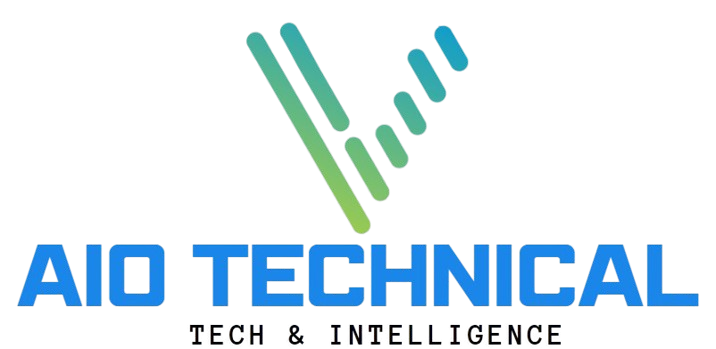Secure Blockchain Technology : Ensuring Data Integrity and Trust

In the digital age, the demand for security in data transactions has never been greater. Secure blockchain technology has emerged as a game-changer, providing a decentralized, transparent, and tamper-resistant way to record transactions. By leveraging advanced cryptographic techniques and consensus mechanisms, blockchain technology not only safeguards data but also fosters trust among users. This article explores the foundational elements of secure blockchain technology, its benefits, applications, and best practices to ensure optimal security.
Understanding Blockchain Technology
Blockchain is a distributed ledger technology that allows multiple parties to maintain a shared database without a central authority. Each block in the blockchain contains a list of transactions and a unique cryptographic hash of the previous block, forming an immutable chain. This structure makes blockchain inherently secure, as any attempt to alter a block would require changing all subsequent blocks—a virtually impossible feat due to the consensus mechanisms employed.
Key Components of Secure Blockchain Technology
- Cryptographic Hash Functions Cryptographic hash functions are essential for ensuring the integrity of the data stored in the blockchain. These functions transform input data into a fixed-length string of characters, known as a hash. A minor change in the input leads to a completely different hash, making it easy to detect any alterations.
- Consensus Mechanisms Consensus mechanisms validate transactions and maintain the integrity of the blockchain. Various models, such as Proof of Work (PoW) and Proof of Stake (PoS), help ensure that all participants in the network agree on the state of the blockchain. These mechanisms prevent fraudulent transactions and double-spending.
- Smart Contracts Smart contracts are self-executing contracts with the terms written into code. They automatically execute actions when predefined conditions are met, eliminating the need for intermediaries and reducing the risk of manipulation.
Benefits of Secure Blockchain Technology
Enhanced Data Integrity
The primary advantage of secure blockchain technology is its ability to ensure data integrity. Once a transaction is recorded in the blockchain, it is immutable. This immutability protects against unauthorized alterations and fraud, instilling confidence in the system.
Increased Transparency
All transactions recorded on the blockchain are visible to all participants, fostering transparency. This openness helps build trust among users, as they can independently verify transactions without relying on a central authority.
Decentralization
Secure blockchain technology operates on a decentralized network of nodes. This means that there is no single point of failure, reducing the risk of attacks and ensuring that the system remains operational even if some nodes go offline.
Improved Security
Blockchain employs advanced cryptographic techniques to secure data. Each transaction is encrypted and linked to the previous one, making it extremely difficult for malicious actors to tamper with the data. Additionally, consensus mechanisms add another layer of security by ensuring that only valid transactions are recorded.
Cost Reduction
By eliminating intermediaries and reducing the need for manual verification, secure blockchain technology can significantly lower transaction costs. This efficiency is especially beneficial in industries like finance, supply chain, and healthcare.
Applications of Secure Blockchain Technology
Financial Services
In the financial sector, secure blockchain technology is revolutionizing payments, remittances, and trade finance. By providing a secure, fast, and transparent way to conduct transactions, blockchain reduces fraud and operational costs while increasing efficiency.
Supply Chain Management
Blockchain enhances supply chain transparency by providing an immutable record of every transaction along the supply chain. This allows businesses to track products from origin to destination, ensuring authenticity and reducing the risk of fraud.
Healthcare
In healthcare, secure blockchain technology can be used to protect sensitive patient data and streamline administrative processes. By enabling secure sharing of medical records, blockchain enhances patient privacy and reduces the risk of data breaches.
Voting Systems
Blockchain’s inherent security and transparency make it an ideal solution for voting systems. By securely recording votes in a tamper-proof manner, blockchain can help increase trust in electoral processes and reduce fraud.
Identity Verification
Secure blockchain technology can simplify identity verification processes by providing a decentralized, tamper-proof identity management system. This can enhance security in online transactions and reduce the risk of identity theft.
Best Practices for Ensuring Secure Blockchain Technology
Regular Security Audits
Conducting regular security audits is essential for identifying vulnerabilities and ensuring the integrity of blockchain systems. This practice helps organizations stay ahead of potential threats and maintain a secure environment.
Use of Strong Cryptographic Protocols
Implementing strong cryptographic protocols is crucial for securing data on the blockchain. Organizations should use well-established algorithms and regularly update their security measures to counter emerging threats.
Educating Users
User education plays a vital role in maintaining blockchain security. Training users on best practices, such as recognizing phishing attempts and securely managing private keys, can significantly reduce the risk of breaches.
Collaborating with Experts
Engaging cybersecurity experts can provide valuable insights into securing blockchain technology. Their expertise can help organizations design robust security frameworks tailored to their specific needs.
Maintaining Compliance with Regulations
Organizations must stay informed about regulations surrounding blockchain technology and ensure compliance. Adhering to legal standards can mitigate risks and foster trust among users.
Challenges Facing Secure Blockchain Technology
While secure blockchain technology offers numerous benefits, it also faces challenges:
- Scalability Issues: As blockchain networks grow, scalability becomes a concern. Many existing solutions struggle to handle large volumes of transactions efficiently.
- Regulatory Uncertainty: The regulatory landscape for blockchain technology is still evolving. Organizations must navigate complex legal frameworks to ensure compliance while leveraging blockchain’s benefits.
- Energy Consumption: Some consensus mechanisms, such as Proof of Work, require significant energy resources, raising environmental concerns.
- Interoperability: The lack of standardization across different blockchain platforms can hinder interoperability, limiting the ability of systems to communicate with one another.
Future Prospects of Secure Blockchain Technology
The future of secure blockchain technology looks promising as advancements in the field continue. Emerging technologies such as quantum computing and artificial intelligence (AI) are expected to further enhance blockchain security and functionality. Additionally, the growth of decentralized finance (DeFi) and non-fungible tokens (NFTs) will likely drive demand for secure blockchain solutions, pushing innovation and expanding the technology’s applications.
Conclusion
It stands as a cornerstone of modern digital security, providing a reliable framework for conducting transactions and managing data. Its ability to ensure data integrity, transparency, and decentralization makes it a powerful tool across various industries. By adhering to best practices and staying vigilant against potential threats, organizations can harness the full potential of secure blockchain technology. This article is prepared by V Aiotechnical.com, reflecting our commitment to delivering insightful and professional content on cutting-edge technologies. As the landscape continues to evolve, staying informed and proactive will be key to reaping the benefits of blockchain security.





